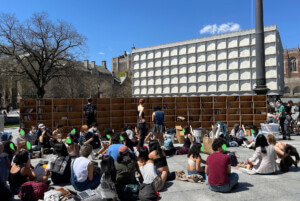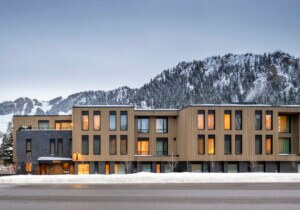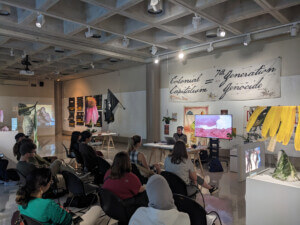“We may formulate this simple state of things in the following paradoxical rule: A city is always a realization of the stories that it tells about itself,” Sharon Rotbard wrote in White City, Black City: Architecture and War in Tel Aviv and Jaffa. The volume, published by the MIT Press, studies how history and narrative alters geography. It takes aim at a longstanding construct that Tel Aviv, labeled by UNESCO as “The White City” for its designs by Bauhaus architects, miraculously rose from the desert, seemingly overnight.
In White City, Black City, Rotbard tells the story of how Tel Aviv’s creation in 1909 and the architecture built under the British rule of Palestine came at the ancient Palestinian city of Jaffa’s expense. Jesse Fox, writing in Haaretz, called Rotbard’s book an “unsentimental take-down of the White City narrative that shatters Tel Aviv’s founding myth.”
AN spoke with Rotbard, an Israeli architect and scholar who currently lives in Tel Aviv and teaches at the Bezalel Academy in Jerusalem, about his research. He cofounded Babel Press in 1995, and has edited and published a few hundred titles. His latest book, The War of Streets and Houses and other texts about the city (2021), translates and introduces 44 French texts into Hebrew. The interview, conducted over Zoom in early November 2023, was disrupted by emergency sirens; bombs were exploding in Tel Aviv. It was finalized in the following weeks via email.
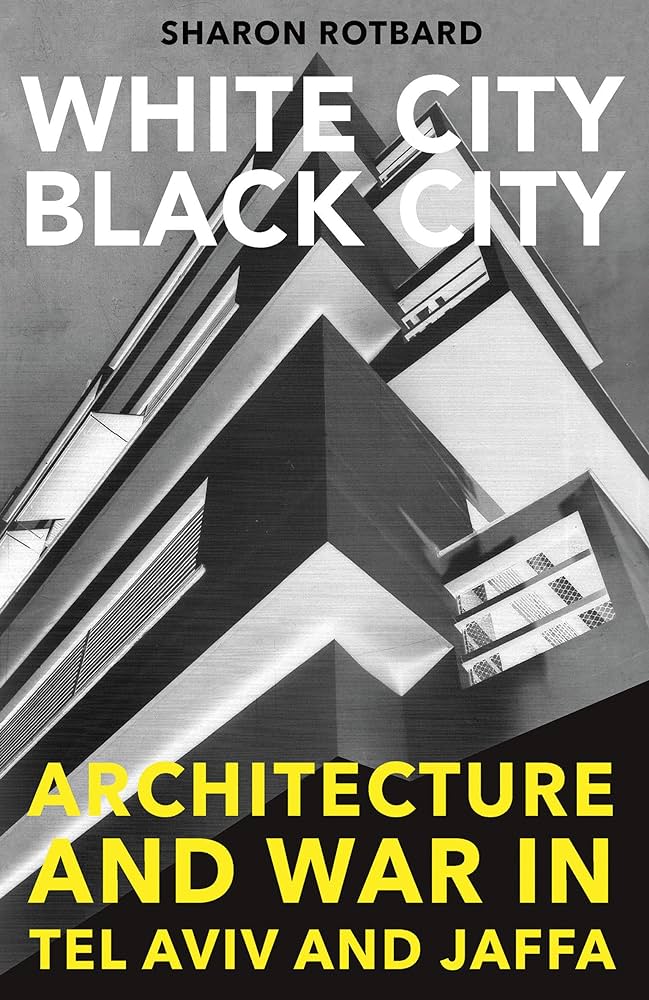
AN: Many architects associate the Bauhaus with progressive values, but outside the Global West, Bauhaus aesthetics are at times deployed in service of colonial agendas. Your book makes the case that this stands true in Tel Aviv – Jaffa. Could you expand on this tension?
Sharon Rotbard (SR): As I explained in my book, Tel Aviv’s appropriation of the Bauhaus brand name was practically baseless. Most of Tel Aviv’s so-called Bauhaus-style structures were built as bourgeois apartment buildings, so there is not much sense in associating this architecture with the [Bauhaus] movement’s noble ideas.
There was a tiny handful of local architects who had been trained at the Bauhaus, most of them for a semester or two. Only two of them were active in Tel Aviv. Arieh Sharon himself, who has been the most prominent and prolific among them, opposed this appropriation in 1984. Years after White City, Black City I discovered that in fact, the school that provided Tel Aviv with the greatest number of architects—even the more prominent ones like Dov Karmi or Genia Averbuch—was the University of Ghent in Belgium, not the Bauhaus.
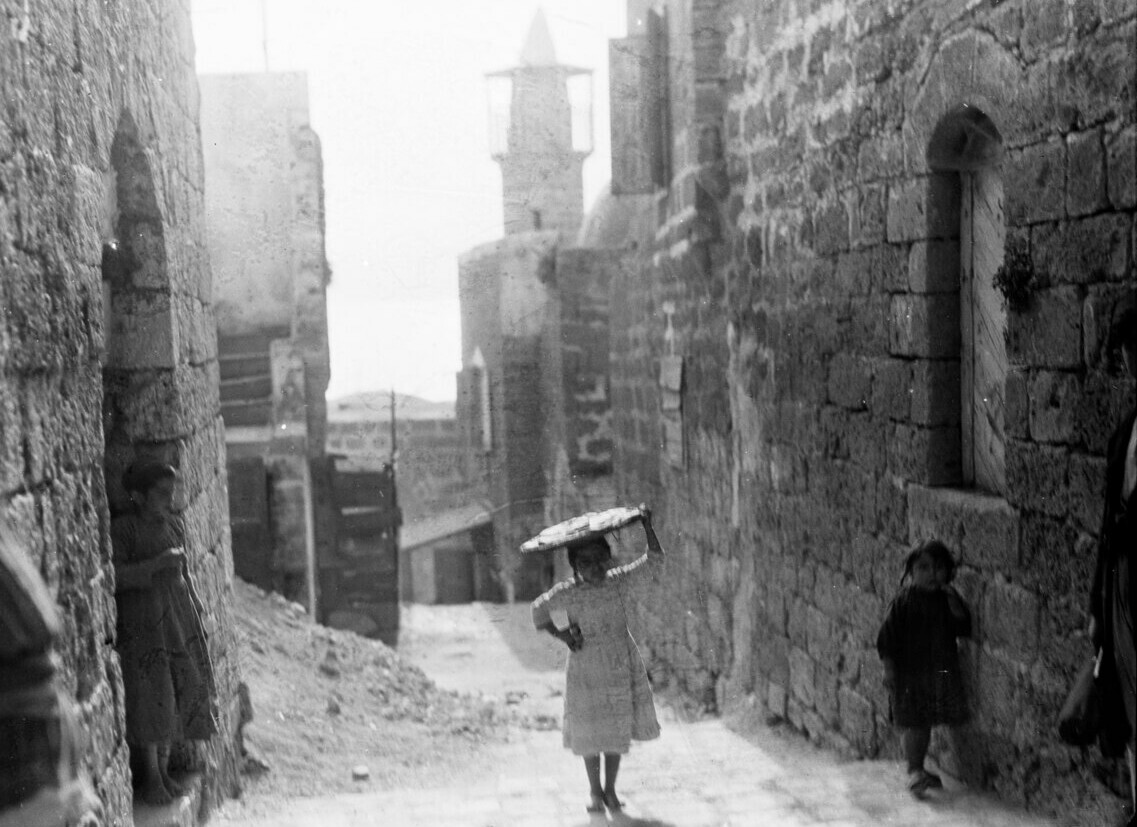
In general, I was also wondering how international the “International Style” really was. Modern architecture is generally presented as a disruption to Western historical contexts. But when it was exported around the world in a quite late stage of colonialism it disrupted other local histories too. In Tel Aviv, modern architecture became synonymous with the already existing idea of a White City detached from local historical contexts, thus confirming the “white city/black city” scheme that Frantz Fanon describes in The Wretched of the Earth (1961).
Fanon theorized the colonial world as a “compartmentalized world” where there is a white city for the colonizer and a black city for the colonized. It was applied sometimes even officially, like in the French colony of Puducherry in India where the division between the white and black cities was prescribed in maps and materialized by a canal that separated them. One may argue, as I did in my latest book, that this scheme is today implemented everywhere.
AN: How did your work on White City, Black City begin?
SR: In 1994 the city of Tel Aviv organized for the first time a huge festival celebrating The White City, titled “Bauhaus in Tel Aviv.” I was commissioned by Zvi Efrat, then the architecture editor of Studio, a superb art magazine directed by Sarah Breitberg Semel, to write an article about one of the buildings being celebrated. I was already quite disturbed by this whole festival, and spoiled the party with a short essay titled “Tel Aviv, Endlessly Whitened City,” so you could say the book started there.
AN: Why was the festival disturbing?
SR: I thought that this festival unnecessarily amplified and inflated Michael Levin’s nice story about Tel Aviv’s modernist architecture, which we already knew. I never thought that [Tel Aviv’s] body of modern buildings were actually brilliant in the first place. Many of Tel Aviv’s so-called Bauhaus style buildings seemed to me like clumsy reproductions of European masterpieces. But what was even more suspicious was the national agenda behind it all.
I argued that the festival’s main objective wasn’t to showcase architecture but rather to signal a common wish for Tel Aviv to be retroactively recognized as a European city by the international community. By emphasizing this dubious Bauhaus legend, it was as if saying to the Europeans: “You didn’t want us in Dessau, so please accept us here in Tel Aviv.”
More importantly, I had the conviction that this [version of] Tel Aviv’s story completely lacked important parts of its own geography and history and of course, thousands of years of Jaffa history. In the years that followed I read a lot of Tel Aviv history. Much of it was written within the framework of Eretz-Israeli studies, which produced biased narratives of the region that omit much of Jaffa’s Muslim and Arab past. The only appearances Jaffa usually made into those narratives was through its non-Arab or non-Muslim references and episodes—the Jewish Book of Jonah, the Andromeda rock from Greek mythology, or even Napoleon’s brief siege and occupation during his Egyptian campaign—without mentioning the bloody, unnecessary massacre perpetrated against the city’s population.

A similar fate met Jaffa’s geography: Vast areas of the Old City, for instance, have been almost completely demolished. The Manshieh neighborhood was entirely flattened as well as all the surrounding villages in Jaffa’s outskirts. There is nothing left of Jaffa’s Palestinian cultural or even administrative past; even the street names were changed to Hebrew. This was a huge hole in our history which should be acknowledged.
I also discovered how Tel Aviv history overlooked other things that really bothered me. By 2000, I was building my home in Tel Aviv’s Shapira neighborhood and was commuting back and forth between the northern and southern parts of Tel Aviv. I became aware of the inequalities between the city’s two parts: the differences in planning, in building rights, in public services and infrastructures.
To understand this, all you had to do was walk down the street and try to figure out why things were the way they were. When I’d walk down the street or walk my dog or go to the grocery store, I could easily see how different it was from other parts of the city. Many of the streets lacked sidewalks. There were a lot of vacant lots transformed into no-man’s lands or junkyards. The trash in my neighborhood didn’t get picked up at the same rate as other parts of the city. So I thought, if there is a White City, there must be a Black one too, which covers all the places overshadowed by the White City. In my book I called Jaffa, the part of Tel Aviv made up of both Palestinian and Jewish neighborhoods from before 1948, the Black City.
AN: What was Shapira like when you moved there?
SR: Throughout its existence Shapira has been home to various waves of Jewish immigrant communities from Eastern Europe, Bulgaria, Greece, Turkey, Bukhara, Iran, and Afghanistan. By the time I got there in the 1990s, like many other neighborhoods in the Black City, Shapira was considered a slum and under constant threat of demolition and eviction. There were a lot of Palestinian workers from the West Bank and Gaza Strip who were employed in Tel Aviv restaurants or construction sites and preferred renting a cheap room in the city during the week, which was tolerated until the Second Intifada in 2000, over daily commutes through the checkpoints. There was also a large community of recently immigrated Jews from the former U.S.S.R’s Muslim republics who joined the existing Bukhari community already residing in the neighborhood.
After the intifada, the Palestinian territories were put under a permanent lockdown. My Palestinian neighbors were almost immediately replaced by worker-migrants from all over the world, from Russia, Ukraine, Bulgaria, Turkey, Sri Lanka, India, China, the Philippines. By the end of the 2000s, thousands of refugees from Darfur and Eritrea came. There were of course also gentrifiers of all sorts, including myself, mainly of the poor “radical gentrifier” type defined by the Jaffa anthropologist Daniel Munterscu. This diverse composition in the neighborhood persists today, and in other neighborhoods in the Black City, in total contrast to the population in Tel Aviv’s whiter areas.

Although it has never been acknowledged as such, [Shapira] is a historic neighborhood, founded in 1924 as a “Hebrew neighborhood.” Until Israel’s creation in 1948, Shapira was under the Palestinian jurisdiction of Jaffa. Before 1948, there were a few such Jewish neighborhoods that remained part of Jaffa, like the historical neighborhoods of Neve Tzedek and Neve Shalom founded in the 1880s. There was also the Yemenite quarter and newer neighborhoods like Florentin, Shapira, Hatikva, and a whole nebula of tiny settlements spread along the borderline between Jaffa and Tel Aviv.
As the agricultural lands in Jaffa’s outskirts were relatively easy targets for Jewish real estate developers, there were Jewish neighborhoods developed in Jaffa or its periphery and annexed to Jaffa in a later stage, like the case of Shapira. The Hebrew neighborhoods used to pay taxes to the Arab municipality of Jaffa and received little service in exchange; they had arrangements with the municipality of Tel Aviv that enabled them to send their children to Jewish schools there.
So there was a de facto division between Jewish and Arab populations and between neighborhoods along the border, but it was a complicated and porous border. The border areas were sometimes spaces of cooperation and encounter and sometimes, perhaps more often, a battlefield. After the 1948 War, Jaffa and its Hebrew neighborhoods were annexed into Tel Aviv to create the unified city that today is called “Tel Aviv – Jaffa.” Despite this annexation, Jaffa and Tel Aviv’s southern and eastern neighborhoods, under the alias “Black City,” have not really been integrated into Tel Aviv. The differences between these parts are clear and sometimes striking.
AN: What did you set out to achieve when you wrote White City Black City?
SR: Initially, my main ambition was an architectural one. If there’s something to learn from the White City, it is that writing has sometimes much more of an effect than planning or building. Especially in Tel Aviv, which might be the only city in the world named after a book [Theodor Herzl’s The Old New Land, published in 1902]. I had witnessed, with my own eyes in the 1980s, the emergence of Tel Aviv’s White City myth and even the invention of the cool, hip Sheinkin Street. I saw how quickly stories change. I was convinced that by changing Tel Aviv’s narrative, I could generate more change in the city than with any urban action or architectural project.
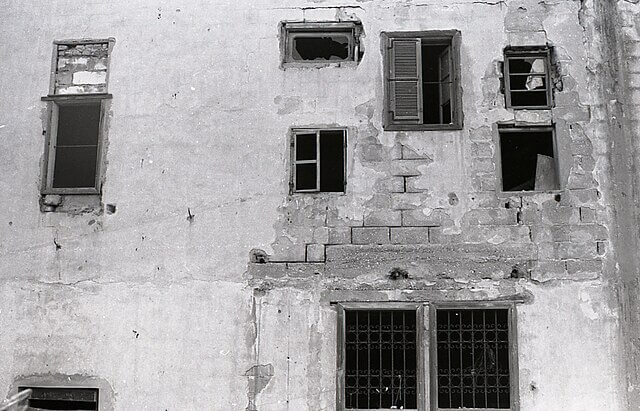
It became clear to me that there is a straight correlation between history and geography, that places that do not appear in books are more likely to disappear from maps. At the time, almost all architecture bookshelves in Hebrew were dedicated to Tel Aviv’s White City and to its so-called Bauhaus architecture. This history covers a relatively short period in the 1930s, less than a decade, and applies to a relatively small part of this city, leaving out of the city’s narrative many other periods, places, and stories.
AN: How was the book met by your peers in Israel? It must have been subversive.
SR: It might have seemed subversive. At the time it was even considered by one reviewer as “one of the most radical books [that’s] appeared in Israel.” But for many people, ordinary people, Jews and Palestinians alike, all it did was explain why the things around them are the way they are. There were people like Nitza Szmuk and Dani Karavan, who had promoted the Bauhaus legend in the first place, that were mad at me for spoiling their story. There were a few other figures I mentioned in the book who were not happy. But in the end, I think it convinced many readers.
Although it had much to do with architecture and its role in our culture and politics, White City, Black City was not addressed to architects but to a much wider readership. When it first appeared in Israel, one of the reviewers, the late Adam Baruch, wrote that it is a book for every Hebrew reader. It generated a certain historical debate within the architectural circles, but its main impact remained in the public sphere and affected the apprehension of Tel Aviv – Jaffa’s histories and geographies. It also dislocated Tel Aviv from its imaginary environment in Germany and relocated it back to the Middle East.
Many of my book’s early insights have been further developed and researched by many brilliant scholars and excellent professionals. To my knowledge, the municipality of Tel Aviv even appropriates and commercializes the term “Black City,” as they now officially give Black City tours. Several readers informed me that after reading my book they moved out of their Jaffa apartments.
But we are still far from the book’s main objectives. Jaffa’s past and identity have not been acknowledged, and the same goes with the Black City’s neighborhoods which, like Jaffa, have fallen prey to speculation, gentrification and now even far-right colonization. Despite two decades of action, we haven’t completely shut down the Central Bus Station, and the infamous “Gidi House” military museum that celebrates Jaffa’s fall is still open.
AN: What can architects in the Global West learn today from your book?
SR: It might interest Westerners, as this composite city made of the forced union between Tel Aviv and Jaffa is certainly one of the places where Global North/West meets Global South/East. Those kinds of friction areas are to be found everywhere today. Many of the dilemmas I found in Tel Aviv and Jaffa that concern the ways we narrate and construct our places and cities may be easily found elsewhere.
And at last, architects, wherever they are, can learn from my book that writing and storytelling are effective tools in the development of cities, sometimes much more than planning and bulldozing. Paper is much cheaper than concrete, and it lasts longer.
The statements in this article reflect the views of the individuals who made them and were not composed or directed by AN.








